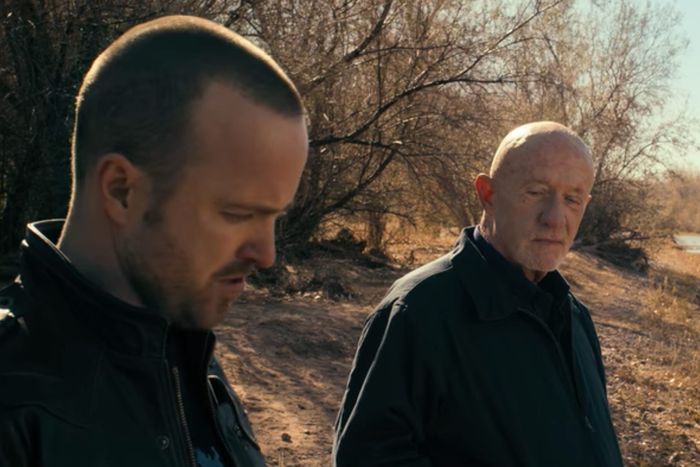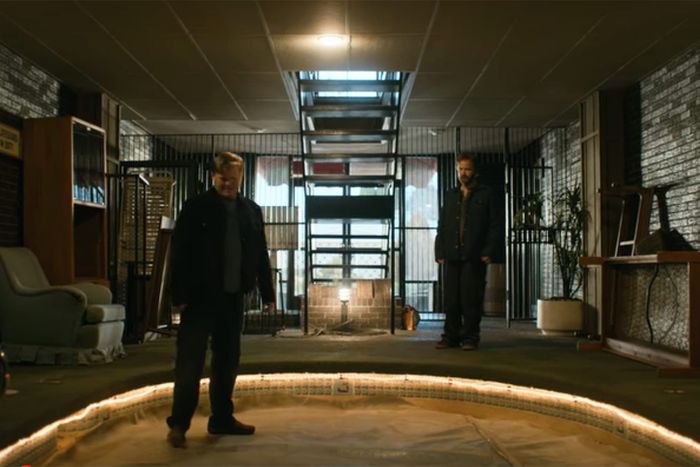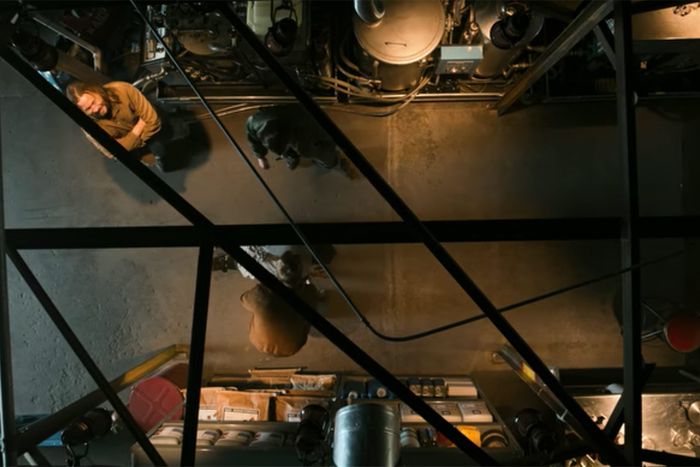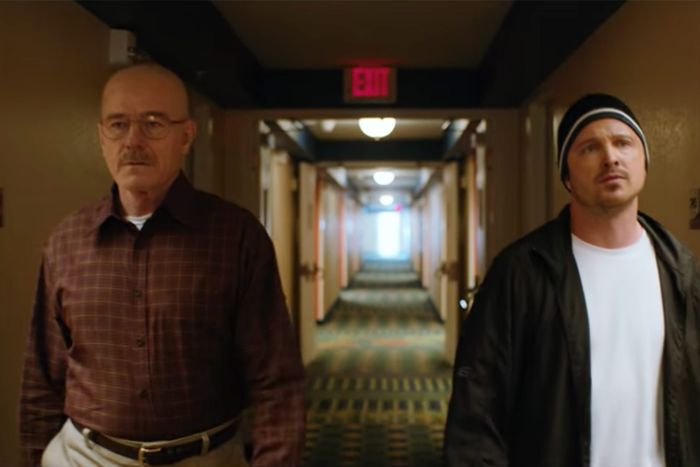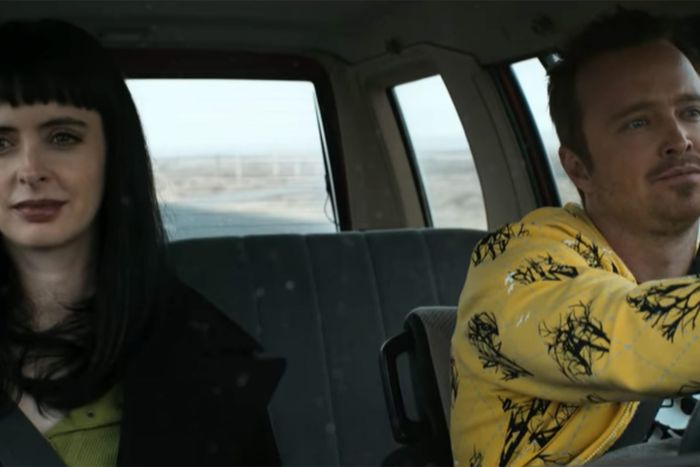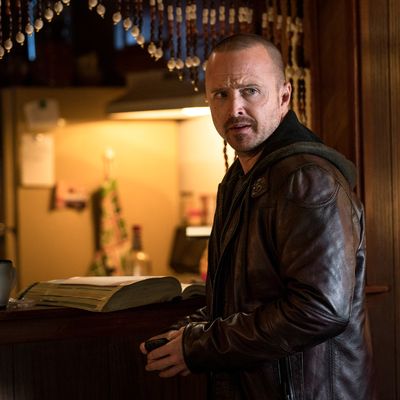
For a show that was relatively straightforward to explain — a high-school chemistry teacher decides to break the law and make meth, and then finds out just how much he likes being a drug kingpin — Breaking Bad has the distinction of being one of TV’s densest and most complex dramas. Thanks to an innovative, interlocking narrative and unconventional structure, Breaking Bad, the ongoing spinoff series Better Call Saul, and El Camino: A Breaking Bad Movie are catnip for dedicated fans who love to track minute details and callbacks.
To understand exactly how the timeline works, it makes sense to start with the original series, even though it’s essentially the middle part of the story. Breaking Bad, by and large, covers a two-year period of Walter White’s life, which marks his evolution from steady family man and teacher into meth-dealing criminal mastermind. The show is typically understood to begin in 2008, meaning that the main action of El Camino, which tracks the actions of Aaron Paul’s Jesse Pinkman immediately after the series finale, begins in 2010. There are some date discrepancies over the course of Breaking Bad’s five seasons, such as a reference to the death of Osama bin Laden (who wasn’t killed until 2011), but by and large the timeline proves to be internally consistent.
El Camino is focused on what happens to Jesse after Walter White murdered the men who locked him in a cage for six months, getting its title from the car Jesse steals to make his emotional getaway in the final moments of the Breaking Bad series finale. Many important Breaking Bad characters make appearances despite being dead, as the movie flashes back to important moments within the timeline of the show. Those flashbacks, and how they fit into the original Breaking Bad timeline, are as follows.
Mike and Jesse
The first trip backward — featuring a cameo by Jonathan Banks as Mike Ehrmantraut — takes place just after the great methylamine train heist in Breaking Bad season five, which ended with Todd (Jesse Plemons) shooting a young boy who had the bad luck to spot them. Mike and Jesse both decided to get out of the meth business at that point, which displeased Walt greatly.
Todd and Jesse
The extended sequence where Todd enlists Jesse’s help to deal with the body of his housekeeper is set during the several months of “Granite State” when Jesse was being held by the gang of Nazis, led by Kenny (Kevin Rankin). It’s here that Jesse learns that Todd has a large stash of cash hidden in his apartment, which Jesse goes to obtain after escaping his cage.
Jesse’s Cage
Also taking place during that time frame is the additional sequence explaining how Jesse’s new adversaries Neil (Scott MacArthur) and Casey (Scott Shepherd) were connected to Kenny’s gang — Neil was the welder who built the rig that kept Jesse chained up in the meth lab/warehouse.
Walt and Jesse
It was relatively inevitable that there would be a flashback to happier days for Jesse and Walt (Bryan Cranston), specifically the morning after one of their desert cook sessions. It’s not said explicitly, but based on Walt’s coughing and Jesse’s emphasis on hydration, it seems likely that this was the infamous trip from season two’s “4 Days Out,” when their attempt to cook over a million dollars’ worth of meth stranded them in the desert with a nonfunctional RV.
Jane and Jesse
In that flashback, Jesse talks with an unseen girlfriend on the phone — it’s of course Jane, whom Jesse remembers later in a film-ending flashback. Based on wardrobe (Jesse’s bright-yellow hoodie) and the script (Jesse brings up Jane’s thoughts about “the universe,” which came up in a flashback scene from the season-three episode “Abiquiu”), this scene is likely set during their drive home from visiting the Georgia O’Keeffe museum in Santa Fe at some point during season two, before their descent into heroin use.
How does this all connect to the larger timeline? There aren’t any major references to Better Call Saul in El Camino, but the spinoff series, which functions largely as a prequel to Breaking Bad, begins approximately in 2002, and by season four has arrived in the year 2003, an era where the phones are not smart and Blockbuster Video still thrives.
Flashbacks on Saul fill in a great deal of Jimmy McGill’s (Bob Odenkirk) backstory, including looks back at his childhood and key milestones in his early law career, while the main timeline not only tracks Jimmy’s life, but the rising drug empire of Gustavo Fring (Giancarlo Esposito), with appearances by long-dead Breaking Bad characters in happier and healthier times. (Mark Margolis, as the eventually handicapped Hector Salamanca, gets to prove that he can do a whole lot more than just ring a bell emphatically.) Better Call Saul is driving quickly toward the year 2008, when Jimmy McGill has fully transitioned into “criminal” lawyer Saul Goodman. At the end of season four, Jimmy is now using the name Saul Goodman for his still quasi-legit legal practice, but the show has yet to close the gap between those specific years.
Better Call Saul also features a few flash-forwards to Jimmy’s future life, post-2010, as “Gene,” a Cinnabon franchise manager trying to keep a low profile in Omaha, Nebraska. It’s not exactly clear how much time has elapsed since Saul Goodman left Albuquerque for his new life, which happened about six months before the end of Breaking Bad, approximately in March 2010. So there’s every chance that in season five of Saul, we could get a flash-forward to Gene turning on the news — and finding out what happened to his ol’ pals Walter and Jesse.


